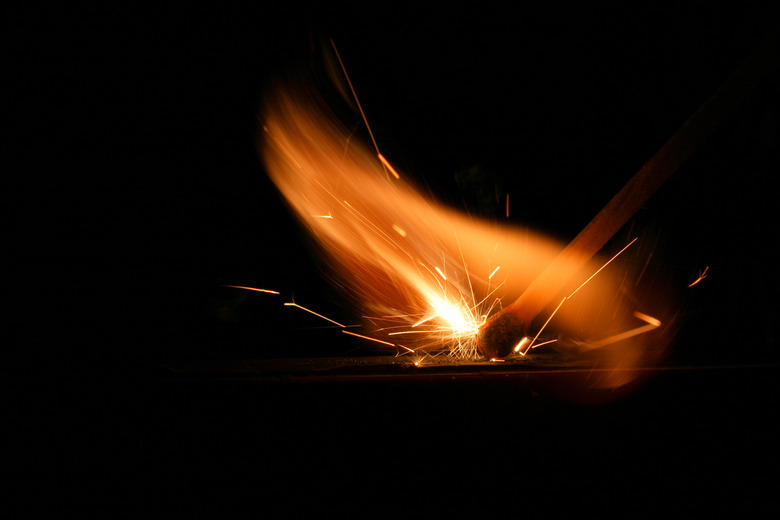The Energy Transformation Of A Match
Lighting a match is an excellent example of multiple energy transformations. Despite being an incredibly simple action that takes only seconds, it involves several types of kinetic and potential energy.
TL;DR (Too Long; Didn't Read)
When you light a match, multiple energy transformations take place involving mechanical, thermal, chemical and light energy.
Meaning of Energy
Meaning of Energy
Everything needs energy to live, move and fulfill its role in this world. Physicists define energy as the ability to do work and define work as moving something against a force, such as gravity. Energy comes in different forms, such as light, heat, sound and motion. Every form fits into one of two categories: kinetic energy (energy in motion) or potential (stored) energy. Most forms of energy can change form, but energy is never lost. Some energy transformations are single transformations, such as a toaster transforming electrical energy into thermal energy to toast your bread. However, some energy transformations, such as lighting a match, involve multiple energy transformations.
Mechanical Energy to Thermal Energy
Mechanical Energy to Thermal Energy
Mechanical energy is energy associated with the motion and position of an object. When you strike a match, it moves through the air until it rubs against a surface. The rubbing produces the heat required to light the match. This is a transformation from mechanical energy to thermal (heat) energy.
Thermal Energy to Chemical Energy
Thermal Energy to Chemical Energy
Thermal energy is a kinetic form of energy that comes from the temperature of matter, which is any substance made up of particles or molecules. When the temperature rises, the particles vibrate faster, releasing more heat. This thermal energy causes the particles in the match to release stored chemical energy.
Chemical Energy to Thermal Energy and Light Energy
Chemical Energy to Thermal Energy and Light Energy
Chemical energy is a potential form of energy that holds particles together. The head of a matchstick has a great deal of chemical energy stored in it, including combustible substances that produce a flame when rubbed against a suitable surface. If you leave the head of a matchstick burning, eventually the wood will burn too. As the combustible materials burn, some of the chemical energy is transformed into heat energy, and some is transformed into light energy. Light energy, also known as radiation or electromagnetic energy, is a type of kinetic energy that takes the form of visible light waves, such as the light from a match.
Activation Energy
Activation Energy
Lighting a match involves activation energy, which is the minimum amount of energy that must be available for a chemical reaction to occur. To strike a match, you must exert a certain amount of force to create the friction and heat needed to light it. The chemical reaction takes place when you reach the activation energy threshold.
Cite This Article
MLA
Gillespie, Claire. "The Energy Transformation Of A Match" sciencing.com, https://www.sciencing.com/energy-transformation-match-7348200/. 23 April 2018.
APA
Gillespie, Claire. (2018, April 23). The Energy Transformation Of A Match. sciencing.com. Retrieved from https://www.sciencing.com/energy-transformation-match-7348200/
Chicago
Gillespie, Claire. The Energy Transformation Of A Match last modified March 24, 2022. https://www.sciencing.com/energy-transformation-match-7348200/
